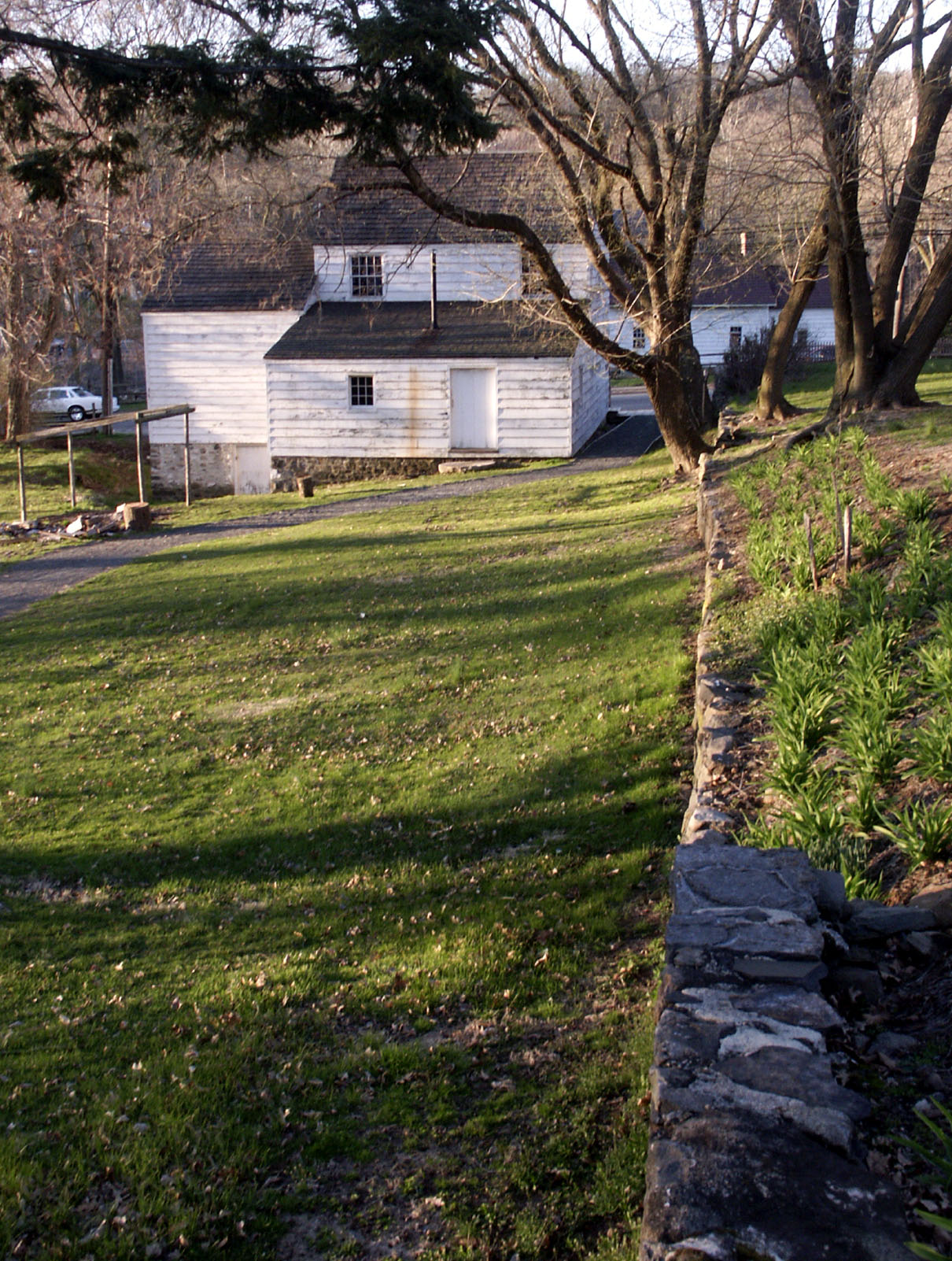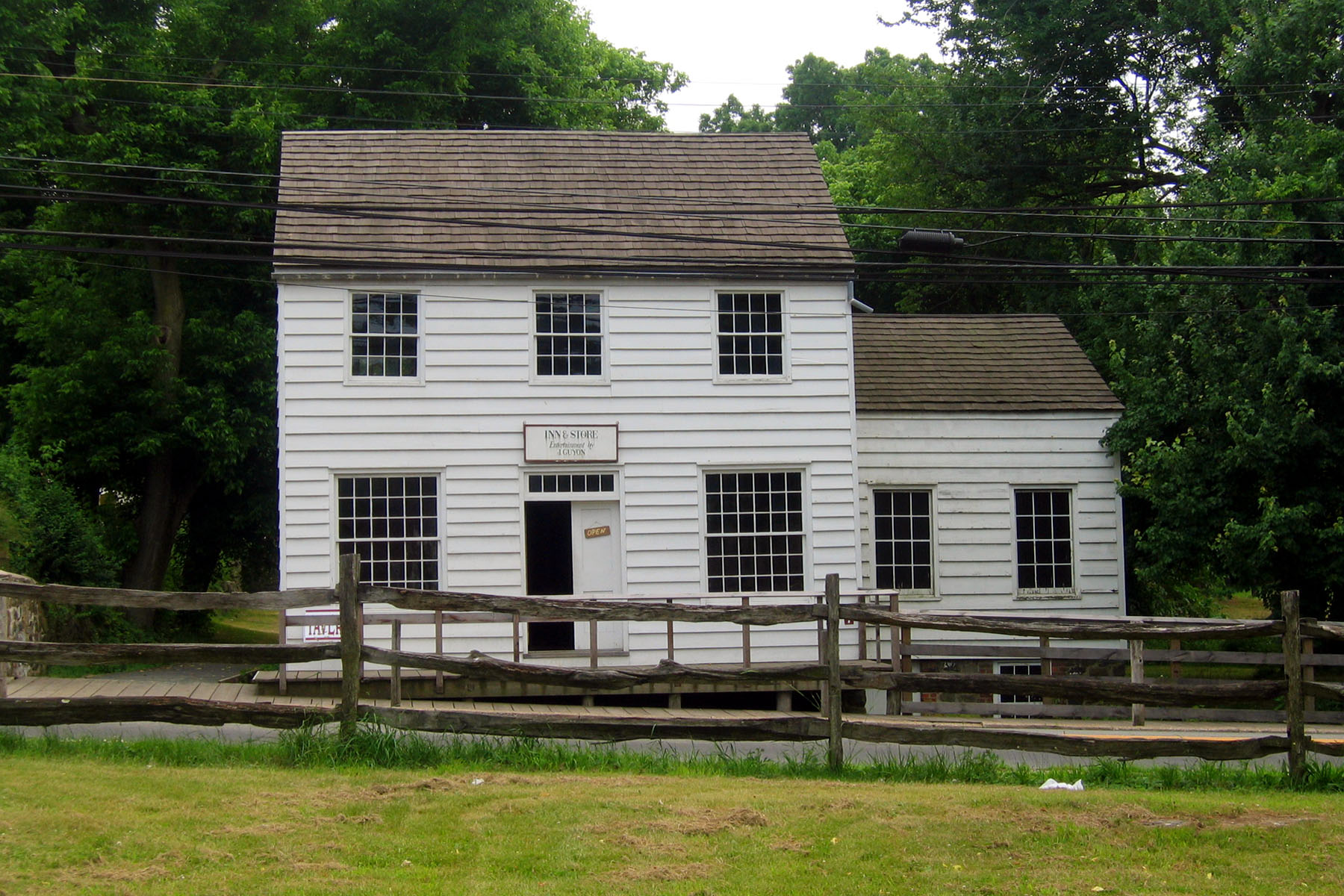Guyon Store (Tavern) #5
The Guyon Store is on its original site, on the south side of Richmond Road between Arthur Kill Road and Court Place. It was probably built ca. 1819 or 1820. It is a simple two-story clapboard building with a one-story lean-to on the rear and a west wing which was added ca. 1835.
James Guyon Jr., an entrepreneur and a descendent of a prominent south shore family, acquired the property in 1819 and probably constructed the building shortly thereafter. A veteran of the War of 1812, Guyon was the proprietor of the Nautilus Inn at Tompkinsville Landing. He was associated with Daniel D. Tompkins in local Republican party politics and in the development of Tompkinsville.
Around 1834 Guyon sold the store to John S. Edwards, who converted it into a residence. The west wing of the building was probably added around this time. Soon after, John Edwards sold the property to his brother, Webley Edwards (who later built the Edwards-Barton House next door). Webley presumably used this building for his tailoring business in the 1840s and 1850s; a surviving account book shows that he provided clothing to many neighborhood residents. The 1850 census shows Webley and his wife Deborah residing there with infant daughter Ella and two other adults. After they moved into the house next door, this property remained in the possession of the Edwards family until 1913, but was rented to other occupants.
From 1918 to 1932, the Bishop family made their home here. Frank and Anna Maria Bishop were the parents of Dorothy, Frank, Muriel, and Rita. The Bishops went through hard times during the era between World War I and the Great Depression, but as Muriel’s son later recalled, their hard work and entrepreneurial spirit helped them to succeed. Mr. Bishop was listed as a chauffeur and an engineer in census records for 1920 and 1930, and in 1930 Mrs. Bishop was listed as a nurse. She also apparently operated a candy or ice cream shop in part of the house. The Bishop children also worked from an early age to help support their family.
From 1932-1963 the structure was occupied by the family of Eugene and Ida Puntillo, who used it as a residence and a barber shop. When New York City acquired the property in 1953, the house was initially thought to be the 18th-century Swaim family farmhouse, and was identified as such in some early plans for the historic village.
The house was restored in 1971-1973, and all additions to the house after 1835 were removed except the west wing. During the restoration the structure was discovered to post-date Swaim ownership and occupancy. It was subsequently furnished and interpreted as a 19th-century tavern and is now the site of Historic Richmond Town's popular tavern concerts.


